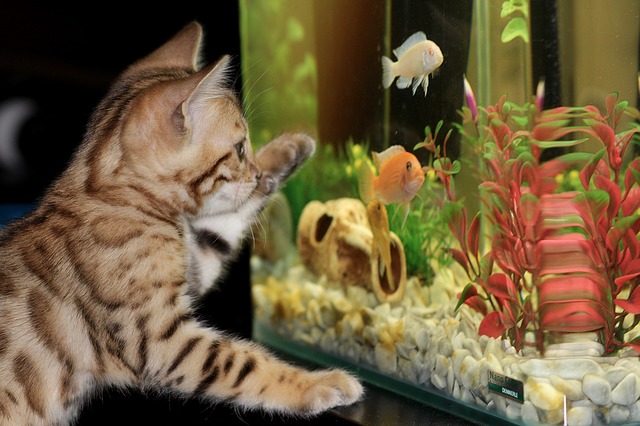|
Get Free Moving Quotes
|
|
Moving Fish and Aquariums |
|
Rating : 0.0/5
288 Views
|
|
|
|
|
|
 Have fish? One of the most difficult animals to transport on moving day is your aquatic pets and their heavy aquarium. To minimize stress and ensure they survive your move, stick to these guidelines. Have fish? One of the most difficult animals to transport on moving day is your aquatic pets and their heavy aquarium. To minimize stress and ensure they survive your move, stick to these guidelines.
Packing your fish
Regardless of how far of a distance you will be moving your fish, refrain from feeding them several days before your move. This will give them time to empty out their digestive systems, ensuring their water stays cleaner and more oxygen rich during the journey.
To make it easier to bag your fish, remove all decorations, plants and most of the water from the tank first (more on how to do that below). This will make them easier to catch and reduce their stress levels. You should also make your fish the last items you prepare to move.
Net each fish individually, placing him or her in their own temporary container: a sealable plastic bag filled 25 percent of the way with water from your fish tank. The rest of the bag should be filled with air. Place each bag in the bottom of a large Styrofoam cooler or Poly boxes, which can be purchased from any pet store. Make sure not to stack the bags and double check that each fish can remain submerged inside their container at all times.
For longer distances or larger fish, you may want to place each animal into a sealed bucket. A battery powered air-pump or air stone can extend the time your fish can be out of their tanks safely. When choosing to use buckets, purchase opaque containers to keep your fish less active and therefore less stressed.
Emptying the fish tank
If your move will take a day or less, fill a few buckets with water from the tank to bring to your new home. Doing this preserves the bacteria cultures and allows your fish to acclimate faster. For longer moves, throw the water away. Once you arrive at your new home you will have to set up the water from scratch.
Remove all plants and decorations and place them in zip top bags. Living plants can survive a few days outside the tank as long as they're wet -- place living plants in a separate bag with a little bit of water and store them with the container holding your bagged fish.
To eliminate added weight, remove the gravel and transport it in a large bucket. The uncleaned filter media should also be placed in a bag or container with water from your tank to preserve the bacteria colony. For longer moves, clean the filter, as the bacteria will be unable to survive a lengthier relocation.
Packing the tank
The best way to relocate a fish tank is with a custom-made wooden crate. Don't have the budget? Wrap the aquarium in blankets or towels and stick the loose edges down with tape. Don't place the tape adhesive side down on your tank or it will leave behind a sticky residue. For added protection, tape large squares of cardboard over the towels.
When lifting the tank, always lift by the base rather than the fragile glass walls. To prevent heavier items from falling on the tank in transit, place it in the backseat of your own vehicle rather than the moving truck.
Moving your fish
When transporting your fish, keep them out of direct sunlight and avoid extremely hot or cold temperatures. Will your move last longer than a day? Find temporary lodging for your fish in a pet store aquarium or in a friend's fish tank.
Remember, you will not be able to save the water from your tank during a longer move and will have to start over upon arrival. Getting the water ready may take up to a week, and your fish definitely can't live in plastic bags for that long.
TIP: When travelling for more than a couple of hours, periodically open and reseal each bag to replenish the oxygen levels.
Setting the tank up in your new home
After arriving at your new home, immediately set up your tank. Add the reserved water, set up the filter and heater and allow them to run to ensure everything is functioning properly. Next, add the gravel, decoration and plants.
To acclimate your fish, place their individual bags into the tank and wait around ten minutes for the water temperature to equalize. If your fish are acting normal, add one cup of water from the tank into each bag and reseal. Repeat this process several times for ten or five minute intervals. Do your fish still look happy, healthy and active? Open the bags and let them swim into their new/old home.
Were your fish subject to a long distance move? As we mentioned above, we recommend finding temporary housing until they can move into their new tank. |
| |